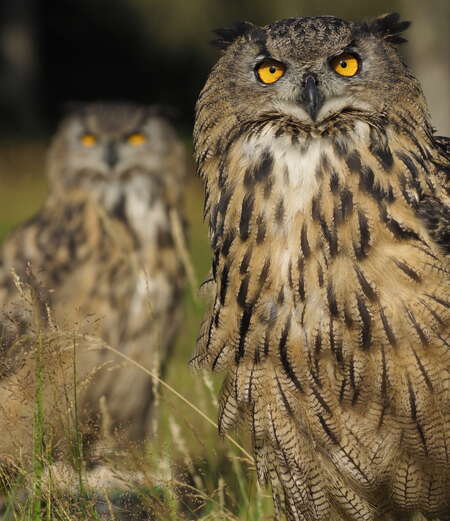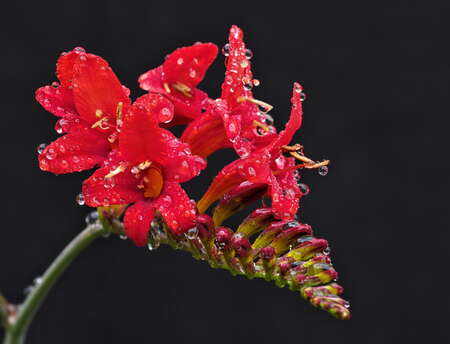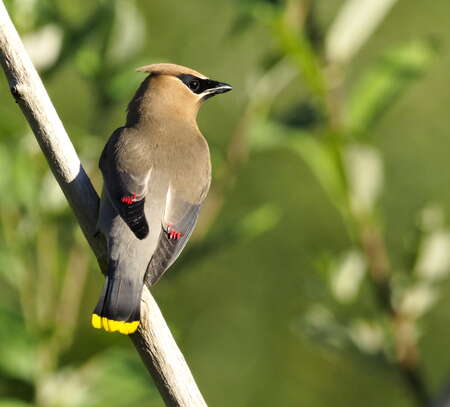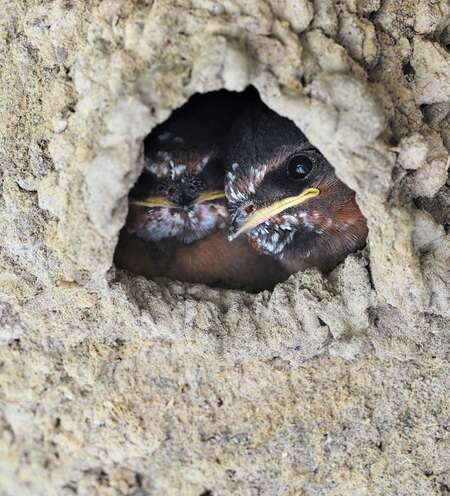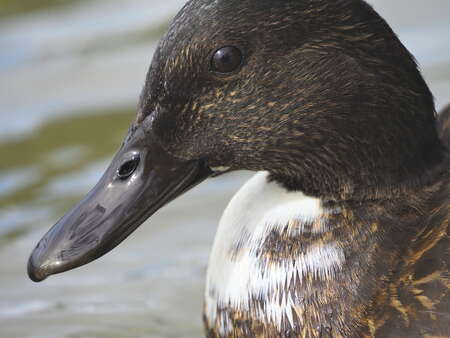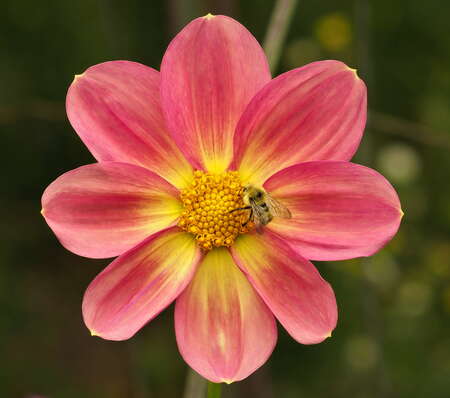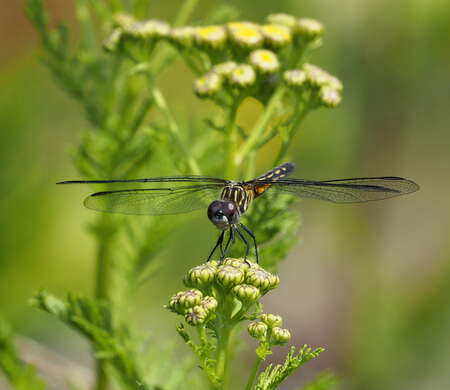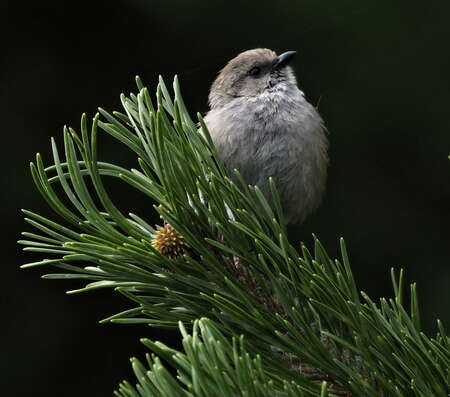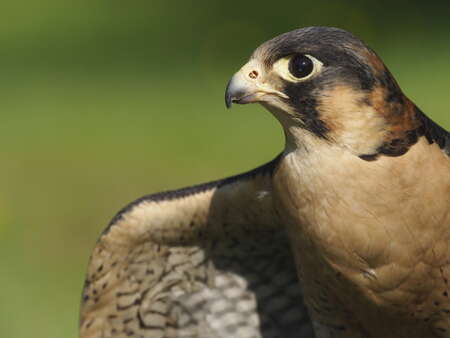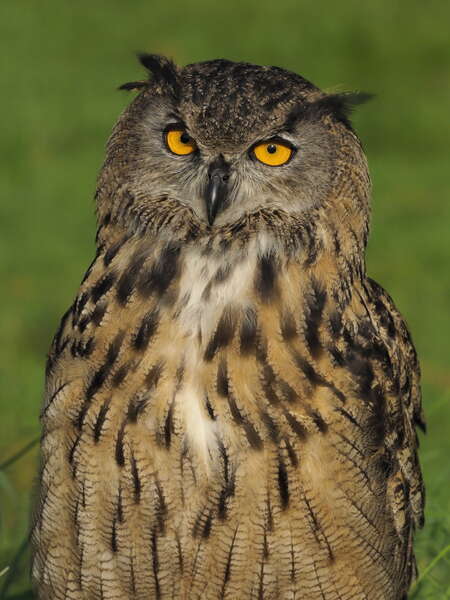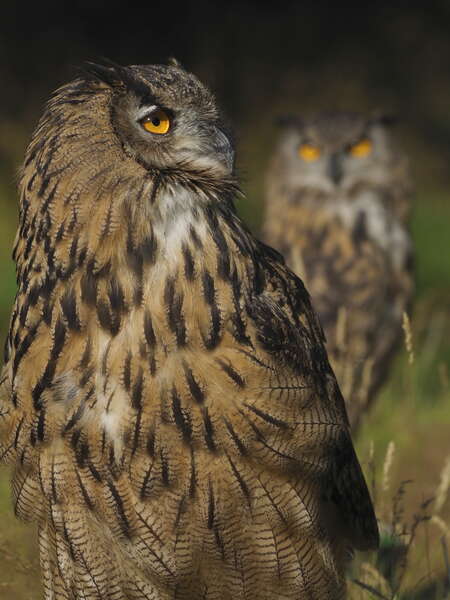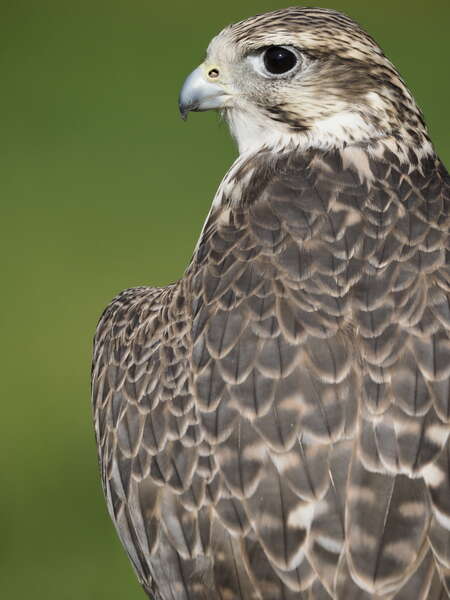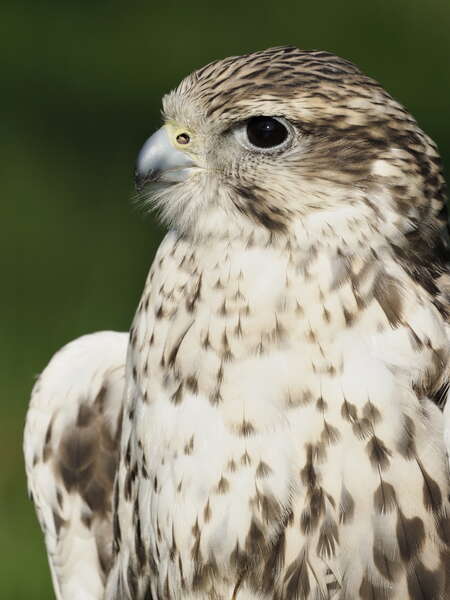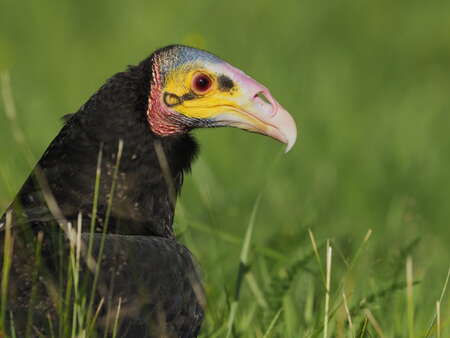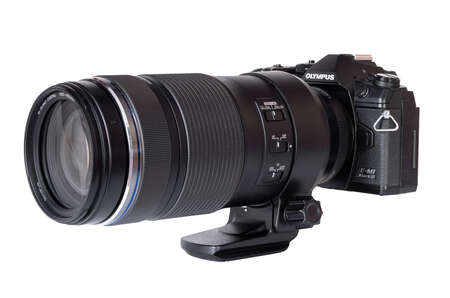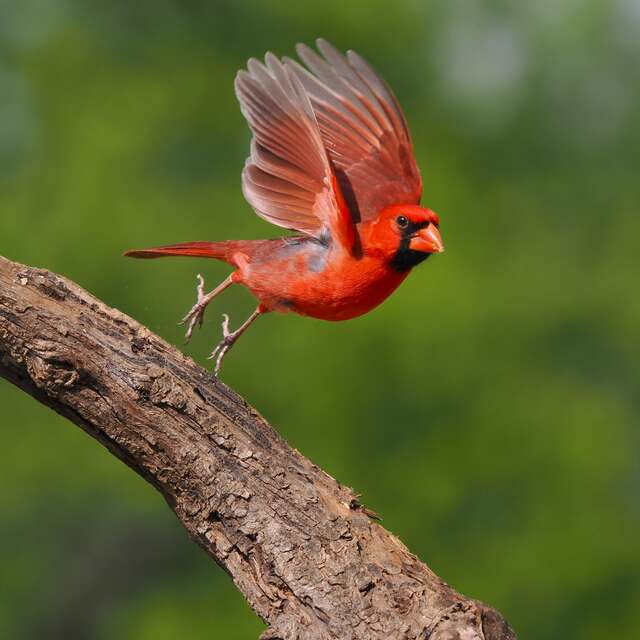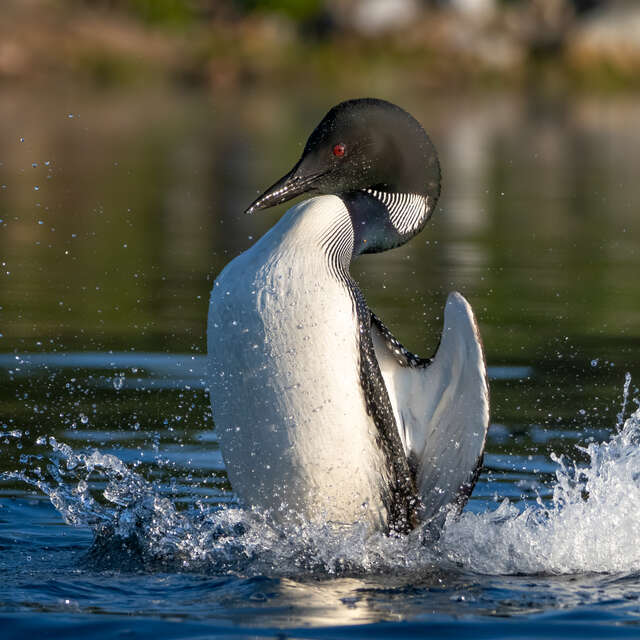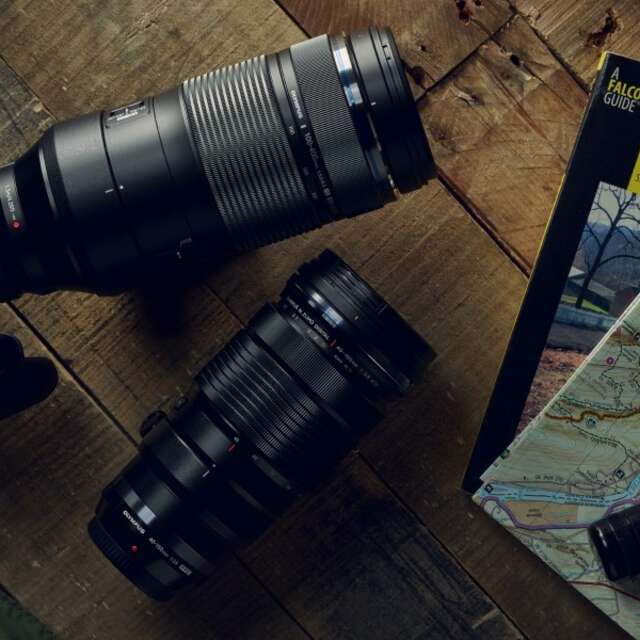As a bird photographer, the prospect of a zoom lens that could give me a similar reach as my beloved M.Zuiko 300mm F4.0 IS PRO lens coupled with the MC-14 1.4X teleconverter, had me intrigued. When I learned the new lens also had built-in image stabilization and could be used with the two Olympus teleconverters, it got my attention. The weatherproof construction, plus, the ability to use the Pro Capture and Focus Stacking modes, opened up exciting possibilities. When offered the opportunity to test the new 100-400mm F5.0-6.3 IS lens, I jumped at the chance.
Would it live up to my expectations?
It was raining steadily the day the lens arrived, but with the weatherproof construction and our flowers in the backyard in bloom, off I went to start testing the lens. Our Crocosmia plants were in bloom and I had previously installed a black backdrop in order to photograph the hummingbirds feeding. The hummingbirds decided not to cooperate that day, however, the close focus ability of the lens made it the perfect setup to shoot flowers. By using longer focal lengths to shoot flowers, you can eliminate much of the background clutter which really makes the flowers stand out.
As an interesting experiment, I shot several images in the High-Resolution mode using a tripod. The rain and slight breeze made it difficult to get the flowers as sharp as I wanted due to flower movement. I then tried the Hand Held High Resolution mode and, to my great surprise, the camera stayed still and, while the subject was moving slightly, the camera was able to align the shots perfectly!
Next was a trip to Billy F. Franks Nisqually National Wildlife Refuge on a warm sunny day. The Great Blue Herons were out in force and the Barn Swallows were zipping about. At the end of the boardwalk were several active Barn Swallow nests. While keeping my distance from the nests, I was still able to get tightly composed shots of the juvenile birds. Testing out the MC-20 and MC-14 proved to be successful. You will find yourself bumping up your ISO when using the teleconverters to compensate for the additional loss of light in the tradeoff for additional reach. The results were still very impressive.
My next stop was to two local botanical gardens to try and find some birds. At this point, I was getting hooked on shooting flowers with the new lens. After first striking out on finding birds, it was time to take a much closer look at the flowers. Shooting flowers is fun, but for me the real fun is to be able to catch the insects in the flowers! Here is where the longer focal lengths really come into play. By keeping your distance and using the longer end of the zoom range, the bees, butterflies, and little critters come and go giving you plenty of opportunities. My normal setting for shooting birds is to leave the lens at the widest aperture.
For flowers, I found myself stopping the lens down to F10 to F14 since depth of field is so narrow when shooting so close. With a minimum focusing distance of 1.3 meters throughout the zoom range you can shoot up to .57X magnification.
Several trips to my local birding hot spots gave few opportunities, fortunately the birds that were there were cooperative. The tiny Bushtits, which are always a challenge to shoot, decided to sit still just long enough for me to shoot a few frames. The usual suspects, the ducks and geese, were begging to have the photos taken with the new lens.
After being impressed with the lens so far, it came time to really put it to a test. In order to check the fine feather detail on birds, I contacted a local falconer to see if we could get together and shoot his birds. John allowed me to work with him and his amazing birds. Eurasian Eagle Owls, Saker Falcon, Auger Buzzard, Red-napped Shaheen and more. A bird photographer’s dream. Working in an open field with good early morning light, the backgrounds became a creamy blur while the feather details were outstanding.
After a series of shoots, I am thrilled to report that the lens is very sharp! Colors and contrast are exceptionally good and the bokeh was very smooth. The lens feels very solid in your hands. As with all super telephoto lenses good shooting technique is important. Holding the camera and lens steady, and using smooth panning techniques make all the difference. The lens comes with the Olympus LH-76D lens hood and a removable Arca Swiss compatible tripod collar. I tested the lens under all types of conditions, and it came through with flying colors. A huge plus was the close focus capability. I found myself shooting more flowers and insects while out looking for birds, it was just too easy and fun.
The M.Zuiko 100-400mm F5.0-6.3 IS lens has won me over! It now will be my “go to” lens for shooting birds. When paired with the M.Zuiko 12-100mm F4.0 PRO lens, it is the perfect day trip combination. It will be great to carry just two lenses that cover such a huge focal length range and deliver outstanding image quality.
Steve Ball is an Olympus Educator residing in the Pacific Northwest, where he found his love of bird photography while working for Olympus as a National Account Executive. Steve photographs all types of birds; both trained/education birds and birds in their natural environment. Steve's favorite camera and lens to shoot with are the OM-D E-M1X and M.Zuiko Digital ED 300mm F4.0 IS PRO.
